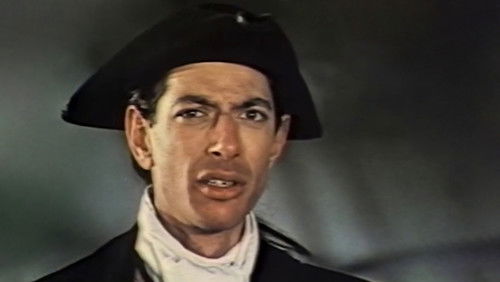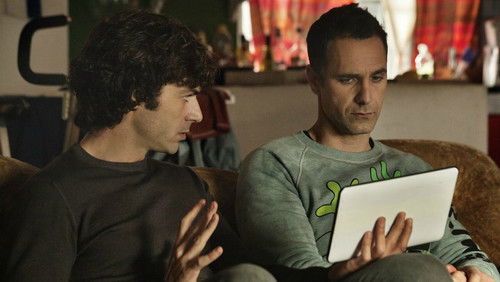1,000 Dollars a Minute (1935)
67K1,000 Dollars a Minute: Directed by Aubrey Scotto. With Roger Pryor, Leila Hyams, Edward Brophy, Sterling Holloway. A down-on-his luck newspaperman finds himself the center of an experiment being conducted by two daffy millionaires–to see if someone can spend $1000 a minute, every minute, for 12 solid hours. If he can do it, he gets $10,000. If he can’t do it, he gets nothing.
“u0026#39;$1,000 a Minuteu0026#39; is a movie about the interest charges on my credit cards. No, just kidding. (Not much!) Actually, u0026#39;$1,000 a Minuteu0026#39; (that dollar sign is in the opening credits) is an above-average B-movie with an ingenious premise, which unfortunately it doesnu0026#39;t quite fulfil.u003cbr/u003eu003cbr/u003eRoger Pryor was a B-movie version of Clark Gable: they played similar roles, but Pryor lacked Gableu0026#39;s confidence and his raffish rough edges. Also, Pryor was smaller than Gable, with a poncier moustache. Muscular and fit, Pryor was completely believable as a boxer in u0026#39;Belle of the Ninetiesu0026#39; … but his small size relegated him to playing a middleweight at best. Gable was the heavyweight, in terms of build and his appeal as a box-office draw.u003cbr/u003eu003cbr/u003eI viewed a nitrate print of u0026#39;$1,000 a Minuteu0026#39; that had begun to deteriorate, and had some footage missing. (I viewed as much as I dared of this film through a hand-held Steenbeck viewer, so as not to subject it to the sprockets of a motorised projector.) This movie ingeniously combines two premises that have separately done good service elsewhere. One of these is the one about the eccentric millionaires who make a bet that cruelly exploits some innocent schlub. An early example of this plot line was Mark Twainu0026#39;s story u0026#39;The Million-Pound Banknoteu0026#39;. A more recent example was the film u0026#39;Trading Placesu0026#39;, with *two* schlubs as the millionairesu0026#39; pawns (one white pawn, one black pawn). The other premise used here in u0026#39;$1,000 a Minuteu0026#39; is the hardy perennial from u0026#39;Brewsteru0026#39;s Millionsu0026#39;: the one about the man who is legally required to squander a vast fortune.u003cbr/u003eu003cbr/u003eu0026#39;$1,000 a Minuteu0026#39; stars Roger Pryor as a cynical newspaperman (Clark Gable subtype) who loses his job and his girlfriend in the same day. Somewhat desperate, he finds himself embroiled in the scheme of two eccentric millionaires. Theyu0026#39;re conducting a wager to see whether or not itu0026#39;s possible for anyone to spend $1,000 a minute, every minute, for 12 continuous hours. (Nobody in this film does the maths, so Iu0026#39;ll do them: that bet would cost $720,000, not counting the stakes of the wager itself.)u003cbr/u003eu003cbr/u003ePryor, of course, is the man who gets stuck with the job of spending the dosh. As an incentive, heu0026#39;s promised $10,000 for himself *IF* he can keep up the spending … if he fails, he gets zilch. A gunman named Benny, with a broad Brooklyn brogue, is assigned to stay on Pryoru0026#39;s heels to make sure he follows the rules and keeps up his spendthrift behaviour.u003cbr/u003eu003cbr/u003eThis premise is ingenious … at first. In the early reels, the pace picks up speed as Pryor must accelerate his spending. At first, this looks a shop-a-holicu0026#39;s dream gig. But the suspense mounts as Pryor discovers itu0026#39;s getting more difficult to spend the money. When word gets out about Pryoru0026#39;s buying spree, merchants assume heu0026#39;s loony and they donu0026#39;t want to do business with him. The cops assume that Pryor is spending stolen loot, or spreading counterfeit cash: either way, they try to collar him.u003cbr/u003eu003cbr/u003eThereu0026#39;s a fine supporting cast in this film. Herman Bing was a German character actor who exaggerated his Prussian accent to comic effect, with wildly exaggerated rolling Ru0026#39;s. Here in u0026#39;$1,000 a Minuteu0026#39;, Bing does a set-piece in which he explains to Pryor that Pryor canu0026#39;t order oysters because oysters arenu0026#39;t in season. Bing trots out the usual myth that oysters are only in season in months that have an u0026#39;Ru0026#39; in their names. (This is untrue: oysters are a bit more watery in the non-R months, but perfectly good to eat.) The way Herman Bing twists his u0026#39;Ru0026#39;s in explaining this concept to Pryor is hilarious! Edgar Kennedy supplies one of his finest examples of his famous slow burn here. The annoying Sterling Holloway is as annoying as usual here; I skipped his big scene in my hand-held viewer. Franklin Pangborn is a bit less nelly than usual. Just a bit.u003cbr/u003eu003cbr/u003eThe real delight of this film is Edward Brophy as Benny, the gunman who supervises Pryoru0026#39;s spending habits. Brophy is typically described as playing dummies, but thatu0026#39;s not accurate: on the rare occasions when Edward Brophy played a genuinely stupid man, such as in u0026#39;The Last Hurrahu0026#39;, he wasnu0026#39;t very credible. Brophy was brilliant at playing befuddled little tough guys: smart enough to know something was fishy, but who couldnu0026#39;t figure out what to do about it. In u0026#39;$1,000 a Minuteu0026#39;, he gives one of his funniest performances.u003cbr/u003eu003cbr/u003eSLIGHT SPOILERS. Unfortunately, after setting up such a great premise, u0026#39;$1,000 a Minuteu0026#39; canu0026#39;t keep up the spendthrift pace of its early reels. I missed some footage in the middle, but the ending loses steam. Itu0026#39;s no surprise that Pryor ends up with Leila Hyams … but her looks in this film disappointed me. In her silent-film roles, Hyams was meltingly beautiful … then the talkies revealed her coarse Brooklyn accent. Yet, in her early talkie roles, Hyams was still good to look at although painful to hear. In u0026#39;$1,000 a Minuteu0026#39;, Leila has no appeal for me at all. Her long blonde hair is now short and dark. She wears a harsh make-up, with lipstick that looks nearly black on screen. Her eyebrows have been plucked and reshaped to resemble nothing found in natureu0026#39;s realm. Leila, how could you?u003cbr/u003eu003cbr/u003eBecause I viewed a damaged and incomplete print, I shanu0026#39;t rate this film. The production values are VERY low throughout. From what I could see, this movie starts out as a delightful and original comedy … and then fails to pay off the promise of its premise.”









